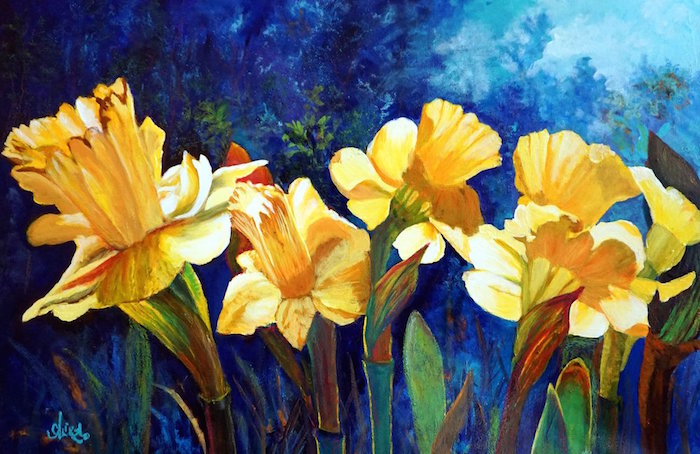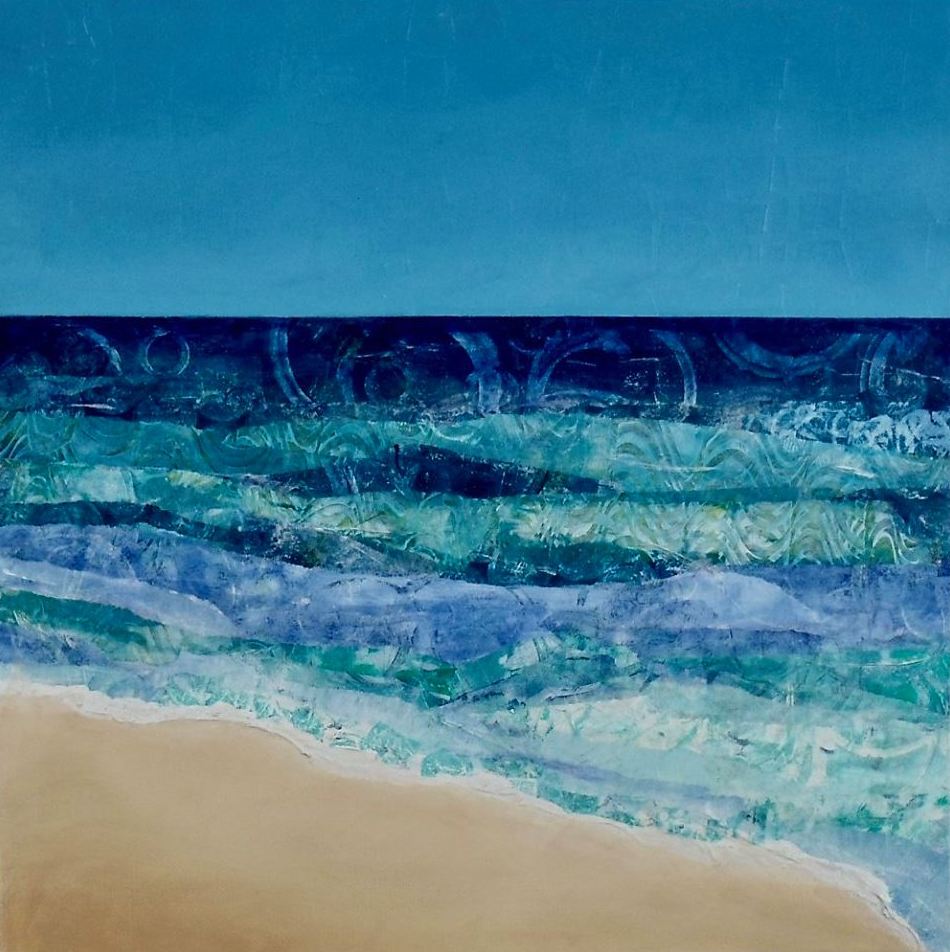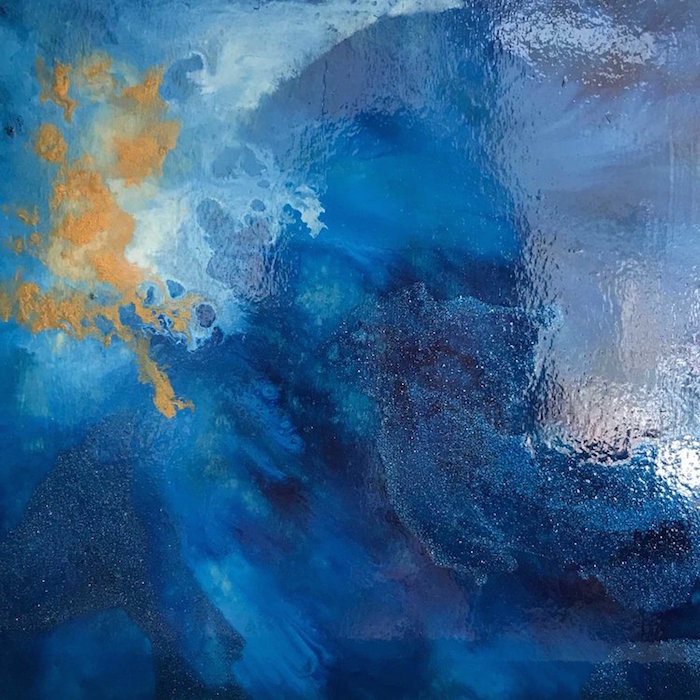I’ve been encouraging artists to join artist organizations for my entire career, but the truth is that not all organizations are created equal.
And before you go thinking that you should start your own, let me say this: the world does not need more artist organizations. The world needs better artist organizations – organizations with powerful visions and commitment to serving their artists.

To be clear, I’m not talking about organizations for hobbyists. Those serve a separate and noble purpose, which is fodder for another article.
When you are trying to earn money from your art … when you aim for professional status … you need a higher level of support.
I think this is why my courses and consulting have been so successful—because it fills a void. And we support artist learning and growth inside the Art Biz Connection community.
Healthy organizations aren’t my competition. We’re all here to elevate the status of artists while helping you lead healthy, productive lives.
I will always steer my artist-clients to strong artist organizations that I know can benefit them.
With that said, here are some thoughts that might help you decide whether or not an organization is right for you.
Profile of a Healthy Artist Organization
Structure & Leadership
The organization has written guidelines, policies, and procedures – and follows them. You know know what is expected of you and what you can expect from the organization.
The organization plays a valuable role within the larger art community. In other words, it’s not an island operating by itself.
Meetings
Meetings at a healthy artist organization are well run. They begin and end on time and the conversation is at a high level. You are energized when you leave.
Members
All members have a sense of ownership. You do what you can to help the organization succeed. In turn, the organization communicates regularly with you, the members.
You feel supported by other members, who realize you’re in it to hold each other up rather than to compete with one another.
You connect with artists that you trust to critique your work, and you’re inspired by the accomplishments of your fellow members.
You’re pleased to have your art represented on the organization’s website along with other members. It’s attractive and updated.
Education & Opportunities
When you are a member of a healthy organization, you are proud to show work alongside the other members. The organization coordinates group shows that are professional from start to finish.
You have access to special programs that are run by respected instructors.
You pick up tips from members that help you with new technology, marketing, teaching, and exhibiting.
Now for the dark side.
Profile of a Dysfunctional Organization
Structure & Leadership
You are always the leader and are not learning or growing. The organization would fall apart without you.
Other members (maybe even you) aren’t pulling their weight. If you aren’t pulling your weight, it says something about your commitment to the group.
The organization doesn’t fulfill its obligations to members, nor does it follow its own guidelines and policies.
The organization is disconnected from the larger community – locally or nationally.
Members
Other members don’t understand the value of professionalism.
Other members are negative, whiny, or excuse-makers. Honestly, it just takes one to ruin it for everyone else.
Members aren’t supporting one another. In fact, they see one another as competition.
Meetings
Meetings seem like a waste of time. You feel deflated, frustrated, or icky when you leave your group meeting.
Do You Keep Your Membership?
When considering whether or not to join or maintain your membership in an organization, your primary responsibility is to yourself, your art, and your future.
The organization is either lifting you up or keeping you in a holding pattern. You’re either growing or stagnating.
If you’re part of a dysfunctional group … if you’re not growing as a result of your membership … drop out. Say, “Alyson made me do it.” I’m happy to take the heat.
Life is too short for all of the frustrations that come with a group that’s a bad fit. You have much bigger mountains to climb.
We have a community of artists waiting to support you in the Art Biz Connection.






26 thoughts on “Dysfunctional v. Healthy Artist Organizations”
Gosh you are right on. I’ve paid attention to you since Triage and not much of a joiner but when i do, I give 150% . Found myself in such a non functioning group, when I became a widow.
I was gaslighted and when I said take me off this committee, they ended the project. What I did not realize, but you identified, they were on their only little island in a community full of art yet never made the connections. Always blaming something or someone else. Now I was asked to join another group and I leave their meetings in awe. They give back to the community via events and $ for scholarships to future artists. The best part I’m back into my art in a major positive way.
Annamaria: I’m so happy you found your tribe.
I was on the board of a local arts group that called itself an “association” but was operating as a “coffee klatch.” Almost all ex-board members, and not a few officers, left the group as soon as their terms were up. Some before. There were endless complaints from the president about some aspect being “not what the others want,” though these others were neither named nor consulted. There were complaints that “sales are not why we’re here” but always from those who didn’t sell. There were people who used projection to create near perfect drawings, but couldn’t mix color to save their lives. The membership’s meetings were always vacuous and none of the issues were addressed. The board meetings were always full of rancor. There were emotional meltdowns by the leadership, and members stood around cooing, “There, there, it will be okay.” It was never any different, and far from okay. There was even a (possibly disabled)secretary who could never follow the conversations and had to have others take notes. She kept muttering “Stop, stop, slow down,” when she tried. I quit the group along with some others. The officer slate changed and the group took a different tack (I’ve been told) but since the membership is largely the same, I’m not going back. The only other local group has stopped reviewing for new members and is considering different rules to limit membership to better product and out of state showing qualification. It seems that some of the older members are disturbed by not being surrounded by peers. Groups can be problematic for a lot of different reasons, and, if there is nothing positive being offered, an artist should make his or her own relationships and walk on by the groups.
Oh, Bug, that sounds terrible. Glad you escaped!
Thank you for a great article, Alyson! You are spot on about this important issue. I have quit several artists’ group in the past because they weren’t professional or focused on sales. I nodded when I read your points about pulling more than your weight, the organization not having clear goals, and working in a vacuum. I have just joined two more organizations and your article gave me some good criteria on which to judge them.
I hope you find the right group, Linda. And, of course, you have us in the Inner Circle to fill some of the roles for you.
There is an international group for my medium that I quit about 2 years ago. The general theme in the whole organization was that it needed to create several themed group shows annual to provide the members opportunities because commercial galleries do not accept textiles. That thinking bogus because I see high quality textiles frequently here in the Dallas area as well as other regions. I didn’t want to be a part of that negative mindset.
Oh, yeah. I can’t stand those theme shows that have nothing to do with nurturing an artist’s individual work. Glad you’re outta there, Carol.
Carol, that’s what I love about Studio Art Quilt Associates! They are so much more than exhibits–it’s all about raising the profile of art quilts. And the convention in San Antonio was amazing. I see from your website that you’re a SAQA JAM! So am I!
This is all so true.
I remember several years ago I was putting in so much time and effort to an arts organization that wasn’t giving me anything back and it was after a short blog post by Alyson back then that woke me up.
I quit all that I was doing soon after and felt so much better, AND had so much more time to dedicate to my work and projects.
Sometimes it just helps to have someone else remind you that this is not normal (we get myopic)!
Sadly, the organization has continued to spiral downward and is no longer a functional organization.
Thank you, Alyson!
Yes, Alys. The post encouraged you to burn your membership card. I thought it was time to update that text with this new one.
I’m happy you’re no longer a part of that group.
spent two years busting it at a local cooperative which was totally dysfunctional. Their own community did not even know they existed and just around the corner was a huge complex filled with doctors and lawyers renting apartments when they were in town. Tons of missed opportunities and members who never showed up and paid others to do their work for them. I got burned out and left. Because of their lack of self-promotion I never sold enough to do better than break even.
Helena: Curious as to how you brought this up with them. Was it ever a discussion?
How timely! I’ve been thinking about this the past few days, whether it’s worth staying with a dysfunctional local group. I like the people but…doesn’t matter. You helped me make up my mind. Thanks 🙂
Yay! Elevate yourself, Nancy. Besides, you have us in the Inner Circle now.
Great article, Alyson. I’ve always done my own thing when it came to my art. I belonged and enjoyed networking groups to promote my business but never belonged to an art group. Now that I am going in a different direction with my art and I’m in a new community an art group sounds appealing. Thanks so much for helping me to make what I hope will be a wise choice.
Yes! I would love for you to find this local community, Mickey.
Timely and useful advice, as always Alyson. Thank you. I’ve recently dropped out of a county art group which had a mix of professional and amateur artists. Been a member for a few years and on the committee for a few. Exhibitions were always a lottery as to who you were paired with and lots of those were people who’d moan about how “you can’t really make a living as an artist” or “You have to keep your prices low otherwise people can’t afford them”. Then there were those who didn’t know how to frame pictures or present their work professionally. Plus the requests for meetings in the evening because x “has to work in the daytime”. What do they think I do?
Only pulled out about 6 weeks ago and already feel a weight of my mind.
Yay! And you have us in the Art Biz Inner Circle, Cathy. No whiners allowed here. 🙂
I’m not new to art but pretty new to the business side of art. Having recently semi-retired, I now have the time and energy to put into doing some promotion and networking. But my question is, how do find a local organization or group to join. I live in a fairly large city but I really don’t know where to look. Any suggestions?
Christine: Kinda depends on where you live. But you can always start with your local arts commission/council. Or Google your medium. I’m not crazy about medium-specific groups because they tend to be too focused on material and not on big picture things. But it doesn’t mean there aren’t some good ones out there.
So glad to hear. I’ve felt so guilty leaving. I truly wanted to help the group grow. But not sure what it was but they were not willing to let me lead. Any way it has gotten worse and an organization that has been in the area for over 25 yrs dissolved Sad.
Great article. I recently decided to do that to a group I have been in for decades. It was great as a novice, but now it just isn’t worth it.
Great article! I have recently been juried into a small but professional group of artists. I see so many of the signs of a healthy art organization. Lots of opportunities to show our work and professionalism by all involved. We all work in very different styles and mediums, so there is a great deal of interest as we learn from each other.
I must confess that this is an art-related article that really spoke to me on a deep, personal level. When I was in art school as an Illustration major a couple decades ago, I was joining some illustration organizations that I could afford. I did this for a while, even knowing that they weren’t really helping me in any way. I even joined a local cartoonist’s organization in the early 2000s, and it was pretty much the same deal. One day, I purchased a book by a well-known illustrator named Marshall Arisman. There was one thing that Arisman said that caused the scales to fall away from my eyes: “Don’t join illustration organizations thinking they’re going to do anything for you.” After that, I vowed I’d never again waste time, energy, and money pursuing something worthless. I’ve looked into some local “fine arts” organizations, only to find that I truly don’t fit in. I consider myself an illustrator with a fine artists’ outlook–my art is inspired by the comic books, movies, videogames, and production (concept) art that I’ve always loved. I prefer to draw & paint my own characters instead of doing someone else’s intellectual property. As much as I’m a (middle-aged) child of “pop culture”, I feel disconnected if all I’m doing is interpreting characters that I have no personal stake in. There are those artists who specialize in doing what’s known as “fan art.” I’ve tried it and have found it personally and artistically unfulfilling. I love drawing in pencil, pen & ink, painting with acrylics, and have fully embraced digital painting. Sometimes I create “4-Color” art (comic art style) illustrations where I wish to preserve the lineart with added color and I’ll sometimes turn my illustrations into full paintings. I will even find ways to incorporate both approaches in some of my artwork.
It’s always frustrating to make a go of being an artist because I don’t have the resources to fund it. I’m not a salesman nor do I have any knowledge of the “crowdfunding” thing. Plus, Memphis isn’t exactly the mecca for illustration art (although it does have more comicbook-themed conventions). Still, I remain a frustrated hobbyist.
Thanks for reading this long-winded post. I enjoyed your article and I look forward to more of them in the near future.
P.S. I still cringe when I see those illustration membership sites that ask “are you a Professional Illustrator or Student?” Are they really so clueless as to not realize that not all artists fall into either category?
Thank you very well written content. Keep sharing such a wonderful and an informative post!